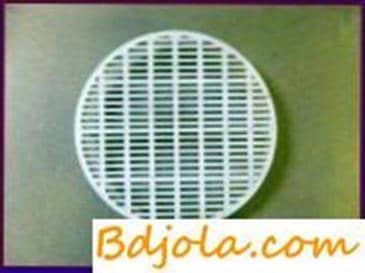
The young families-laps of queens are planted in metal or plastic cages. For the bees, the uterus is inaccessible and safe. Wire mesh cells – a reliable protection.
In order for the bees to take the uterus, it is necessary to give them the opportunity to feel their orphanhood properly. Only after this, the cage with the uterus is inserted into the nest between the frames. In addition, during this time, the oldest, most aggressive bees will fly away from the lap home, while the young do not show hostility to another’s uterus and will readily accept it.
The uterus in the cell is kept for about 2 days. During this period, the bees with it live, lick the maternal substance from it, push the proboscis through the net, and spread the smell of the uterus along the nest with it. The orphanage of the family passes. Bees are set up peaceably, they themselves feed the uterus. If the aperture in the cell is through, then the flap that closes this hole is pushed aside, the bees gain access to the stern, lick it, freeing the hole, and release the uterus. At the blind hole, the pod is lowered, the formed gap is closed with a piece of honeycomb, in which the holes are made with a needle, the cell is returned to the nest. Bees gnaw a wax and also release the outlet for the uterus.
The next day an empty cell from the nest is removed. If the uterus is barren, then the family is not examined for 7-10 days, until the uterus begins to lay eggs. Interference in the life of the family frightens the uterus, worries and nerves the bees, delayed the departure of the uterus to meet with the drones.
Instead of cells use a large mesh cap. For this purpose, a honeycomb with a mature brood is found in the nest, where bees start to be born, old bees are driven away by smoke, they let the uterus on the honeycomb and cover it with a cap, together with young bees. They will perceive the smell of the uterus from close contact and feed it with milk. After a day or two, the uterus is released, and she enters the family no longer alone, but with her personal protection. If the fetus is planted, it will already be placed in the cells under the egg cap during this time. This oviposition will even more bring the family together with the uterus.
The queen in the window frame.
If there are no swarms, the best family can be forced to withdraw the queens. To do this, she is removed from the uterus, she is planted on 2-3 frames in another hive, and in the nest of this orphaned family in the honeycomb with the youngest newly appeared larvae a small rectangular opening is cut out. In this window, 3-4 cm high, as if by order of the beekeeper, bees-orphans and lay queen cells.
It is prudent before this to shorten the cells and remove 2-3 larvae from the neighboring extreme cells, so that the queen cells are not stolen. The frame is placed in the middle of the nest, where there are many bees-nurses and the temperature is steady. When the uterus ripens in the queen cells, they are also placed in squares, and after giving birth to the families.
It should be remembered that the older the bee larva, the more difficult it is for the bees to grow a good uterus from it. It is established that the larvae should be aged no older than 12 hours, although from the three-day-old bees it is possible to raise the queens, however, very poor in quality – small, lightweight, low-fertility. This method of obtaining the queens is the easiest.
Опоношенные рамки. Качество воска.
Young Beekeeper